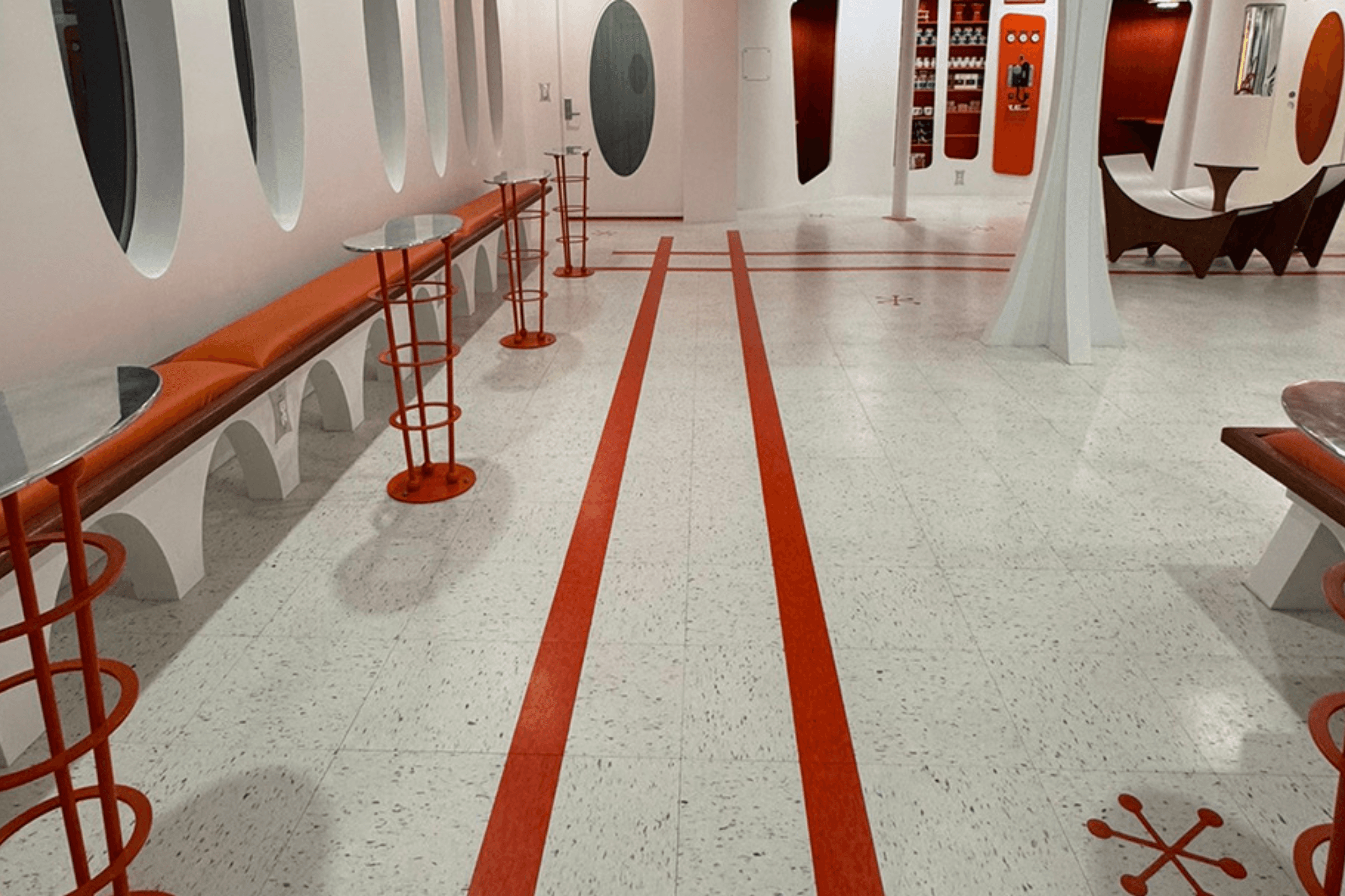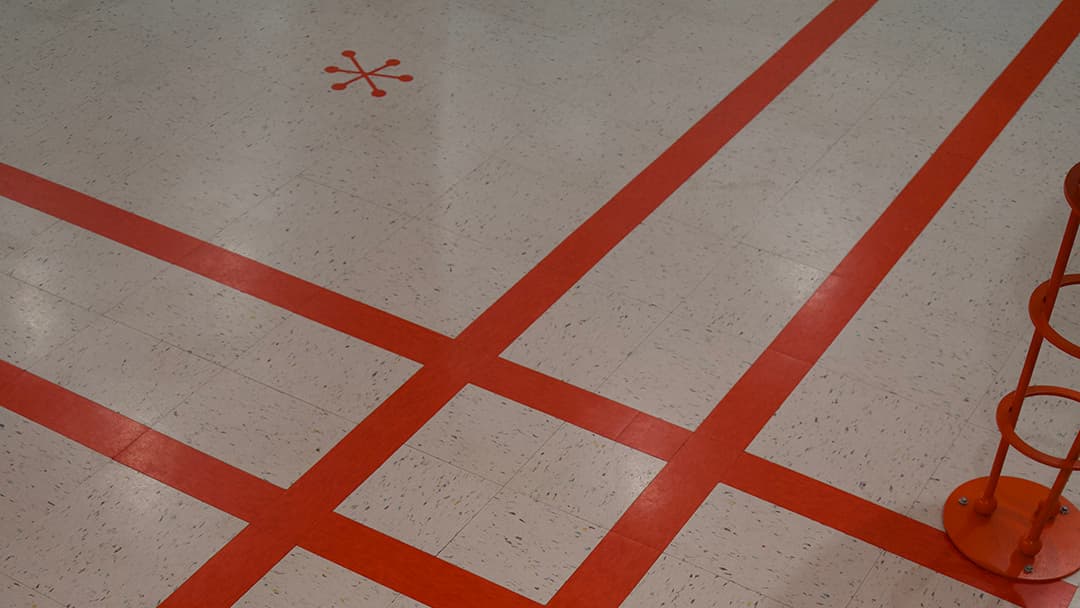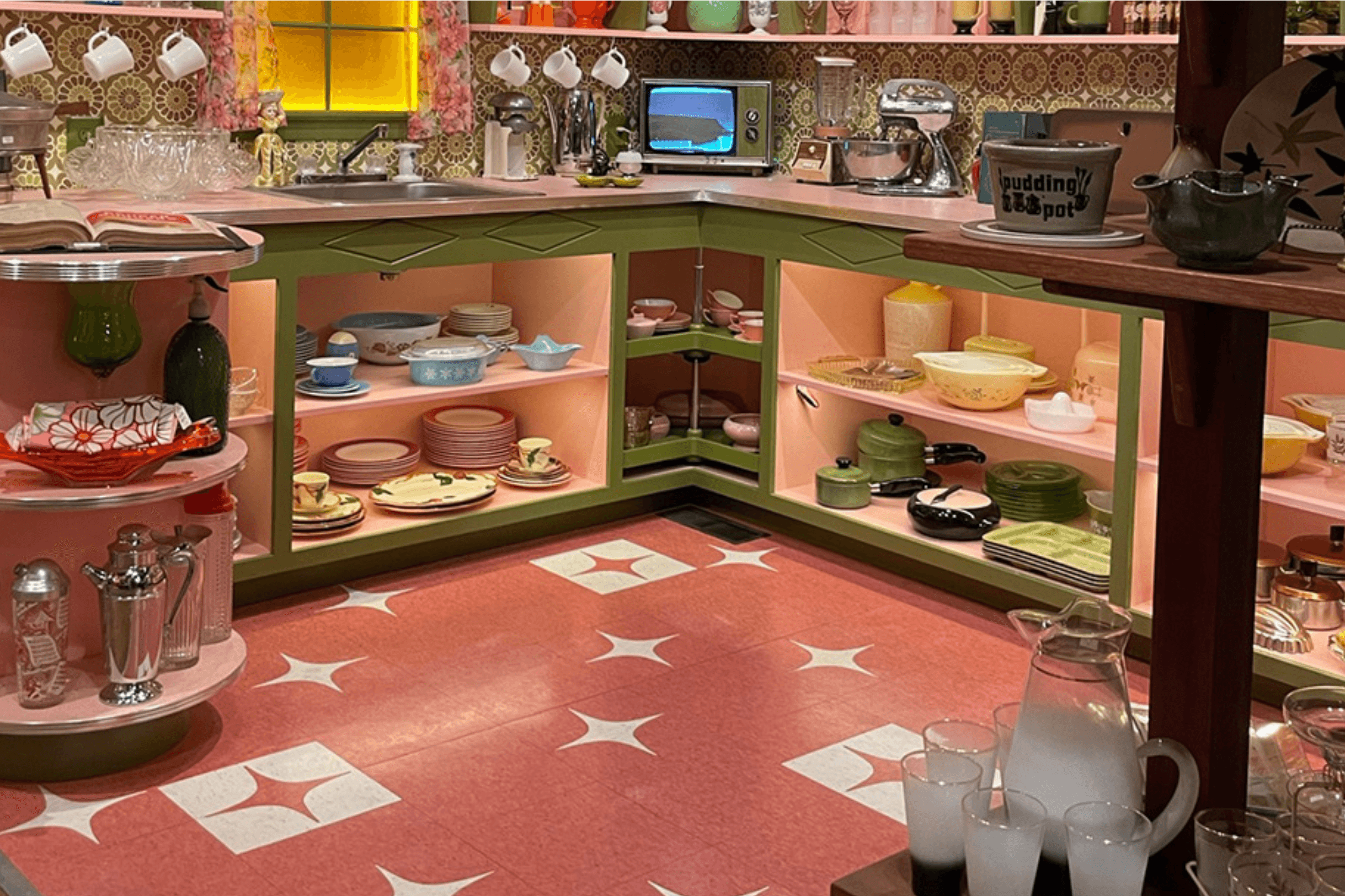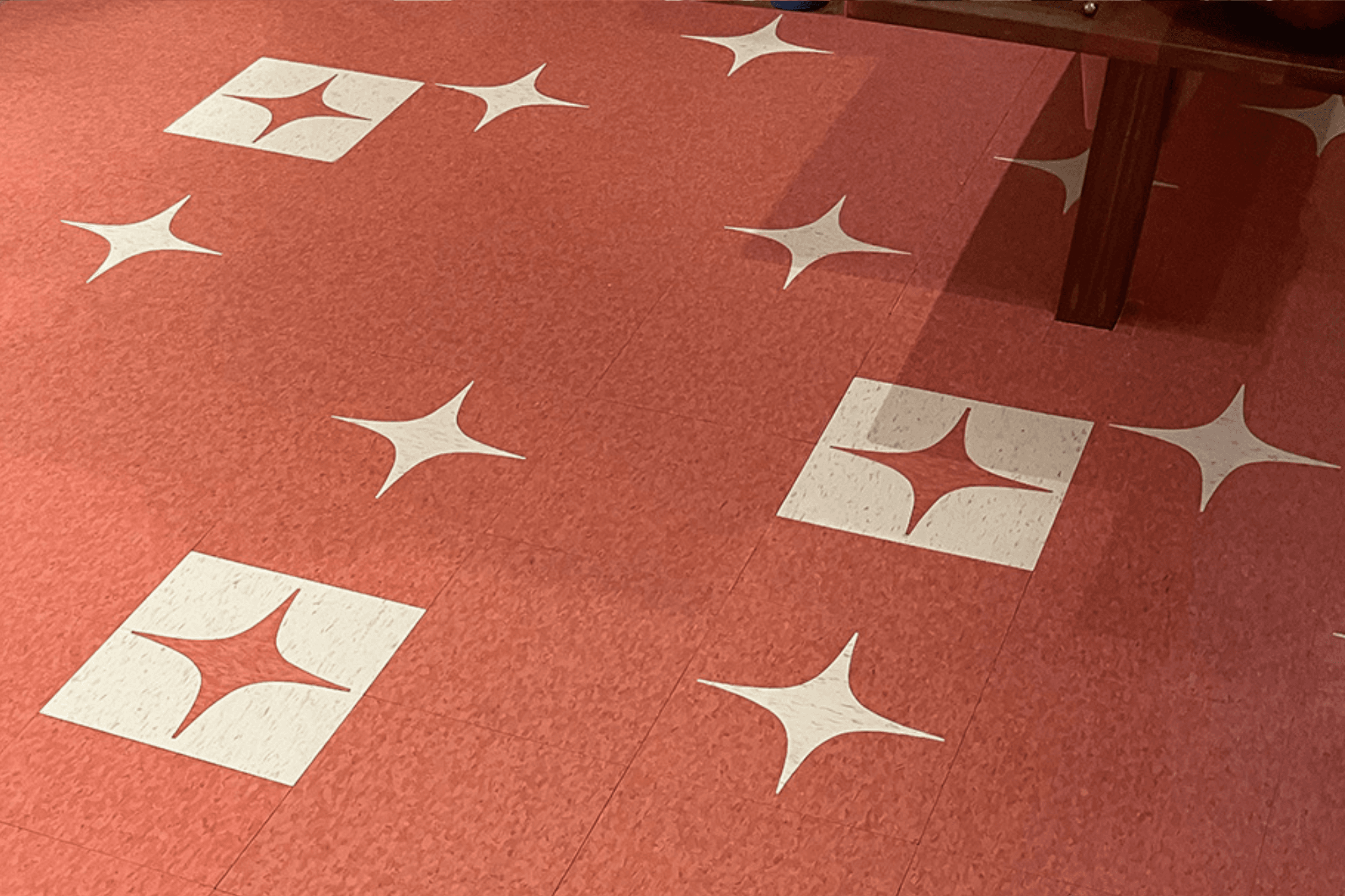In today’s commercial interiors, materials must work harder than ever – delivering on durability, cost-effectiveness, and aesthetic potential. Vinyl Composition Tile (VCT), once relegated to utility spaces and institutional settings, is experiencing a renaissance. Forward-thinking designers are reclaiming VCT not only for its functionality, but as a creative canvas for immersive, storytelling-driven environments.
A Case Study in Retro-Futurism: Panoramica in Peconic, NY
One of the most compelling examples of VCT’s creative potential is Panoramica, a striking coffee shop located in Peconic, New York. Designed by master craftsman Ricky TeeVee, the space channels a retro-futurist vision—an homage to mid-century space-age aesthetics reimagined for a contemporary audience.

The design brief was ambitious: create an environment that feels like an alternate timeline—a 1960s future that never was. To bring this to life, Ricky hand-cut VCT tiles into a complex system of curves, lines, and color blocks. The floor features soft blues, mint greens, and gentle pinks, contrasted by bold, charcoal outlines—an intricate layout that acts as both wayfinding and visual storytelling.
“This isn’t just flooring—it’s a narrative device,” comments Ricky. “It grounds the concept, guides movement, and sets the tone for the entire experience.”
Beyond its striking aesthetic, VCT provides the necessary durability for a busy café setting, making it both a practical and conceptual cornerstone of the project.

Vintage Vibe Meets Modern Versatility: The Times Vintage in Greenport, NY
Ricky’s signature use of VCT continues in The Times Vintage, a retail shop that celebrates decades of fashion, furniture, and culture. Each zone of the store is designed to reflect a different design era, and VCT plays a key role in defining these visual identities.
In the 1950s-inspired kitchen display area, custom avocado green and blush pink tiles create a nostalgic foundation for vintage kitchenware. The dressing rooms take a bold leap into 1970s design, with angular tile cuts in mustard, deep green, and burnt orange—each one precisely hand-cut to create a patchwork of kinetic energy and era-specific character.
A custom jewelry display with space-age curves and built-in lighting, along with mustard-yellow shelving units, extend the VCT palette vertically, seamlessly integrating the material into millwork and display systems.

Where Performance Meets Possibility
Offered through AHF Products under brand names like Armstrong Flooring®, VCT continues to be a trusted material in commercial settings thanks to its resilience, broad design range, and long-term performance––making it a practical choice for spaces where longevity and ease of maintenance are essential.
What sets VCT apart for designers today is its adaptability. Whether cut into flowing curves, bold geometry, or intricate inlays, VCT offers an unmatched combination of creative flexibility and practical performance.

A Surface for Storytelling
For commercial designers seeking a material that balances storytelling with staying power, VCT is no longer just a pragmatic choice—it’s a design decision. The work of designers like Ricky TeeVee proves that when applied with intent, VCT can serve as the foundation—both literally and conceptually—for dynamic, high-impact interiors.
It’s time to look at VCT not just as a floor, but as a feature. As a narrative layer. As a bold, enduring component of environments that engage, inspire, and endure.

